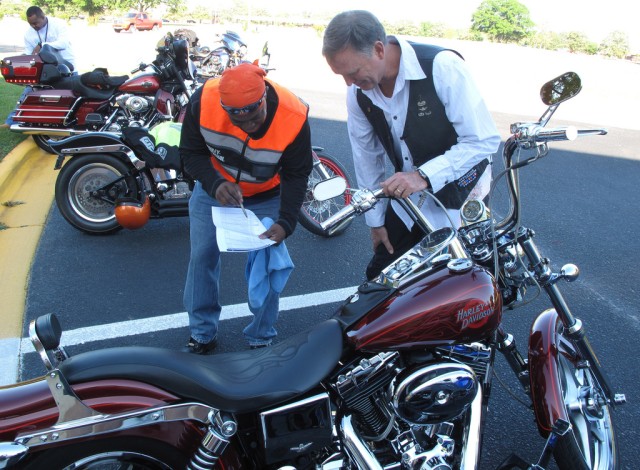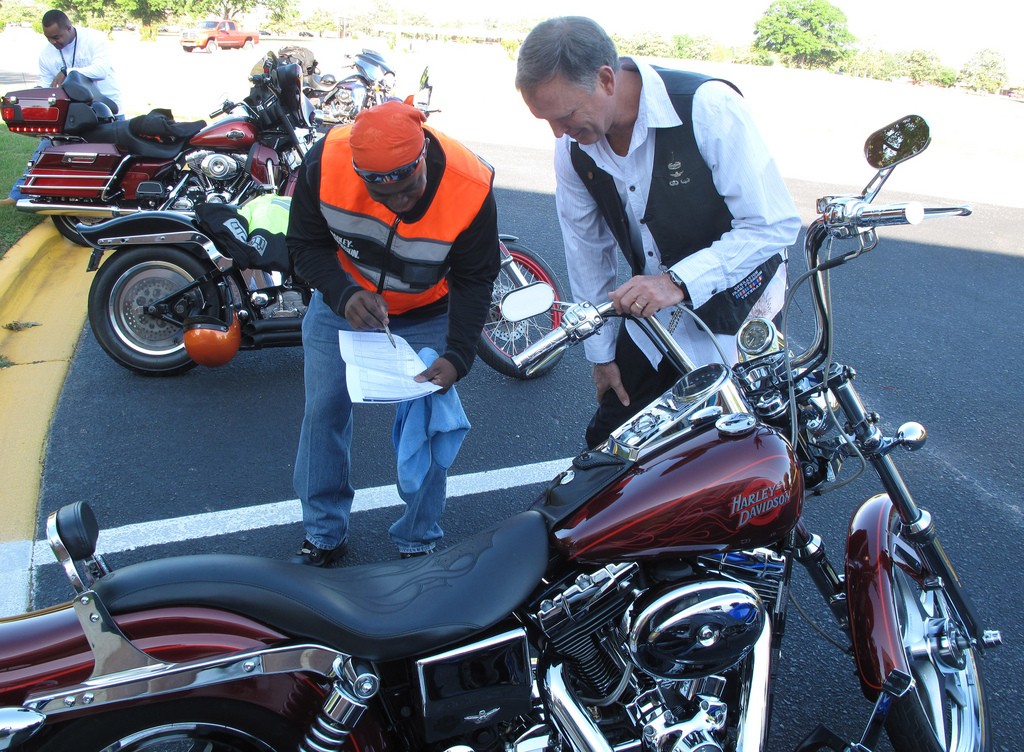
FORT RUCKER, Ala. -- May is Motorcycle Safety Awareness Month and it coincides with the arrival of warmer weather that lures bikers to answer the call of the road.
As the number of motorcycles on the road increases, so does the potential for accidents. The problem is multiplied by the fact you may not have taken your bike out on the road since last season.
How should you prepare for this year's riding season'
"First, ensure your personal protective equipment is in good condition, then, make sure your bike is in good condition," said Lt. Col. Scott Wile, director, Driving Task Force, U.S. Army Combat Readiness/Safety Center. "When you take to the road for the first time this season, take time to 'warm up' and get comfortable with driving skills you may not have used during the winter."
The Motorcycle Mentorship Program at the USACR/Safety Center set the pace for the "new' driving season by conducting a T-CLOCS inspection before a short group ride April 29.
T-CLOCS breaks down to the following systems: T-tires and wheels, C-controls, L-lights and electric, O-oil and other fluid, C-chassis and S-side stand.
"What we did is something we encourage other riders and clubs around the world to do, get ready for the season by checking your ride," said Maj. Henry Washington, president of the Motorcycle Mentorship Program at USACR/SC. "It's a smart thing to do and is a good investment in safety."
The standard industry-approved check is the T-CLOCS, a process aimed at ensuring each critical system on a motorcycle is ready for the road.
"The T-CLOCS checklist guides the rider to check specific parts of their motorcycle prior to riding," said Steve Kurtiak, Driving Task Force, USACR/SC. "If a problem is found, the rider should consult the motorcycle owner's manual for specific tolerances. A recommended practice is to have your riding buddy check your motorcycle while you check theirs. This inspection should also include a check of the rider's license/endorsement, insurance, motorcycle training card and personal protective equipment.
"Riders shouldn't be shy about conducting a T-CLOCS several times a year," he added. "Just because you're good to go after your first safety check, doesn't mean your bike won't develop problems later."
Safety checks such as those conducted prior to the MMP ride at the USACR/SC are an example of how to do things "right," and similar actions by other riders and clubs could have been a factor in a decrease in motorcycle fatalities in 2010.
According to a report issued April 19 by the Governors Highway Safety Association, motorcycle fatalities declined in 2010 by at least 2 percent. Based upon preliminary data, GHSA projects that motorcycle fatalities declined from 4,465 in 2009 to 4,376 or less in 2010. The projection is based upon data from 50 states and the District of Columbia. The decline comes on the heels of a dramatic 16 percent drop in 2009, which followed 11 straight years of steady increases in motorcycle deaths.
While on the surface the national decline is good news, says GHSA, deeper analysis of the data reveals some areas for concern. First, 2010's decrease of at least 2 percent is far less than 2009's dramatic 16 percent decrease. Second, the 2010 decrease was concentrated in the early months of the year, with fatalities actually increasing by about 3 percent in the third quarter compared with the same quarter in 2009.
Additionally, with the improving economy and surging gas prices, motorcycle travel is expected to increase, thus increasing exposure to risk.

Social Sharing